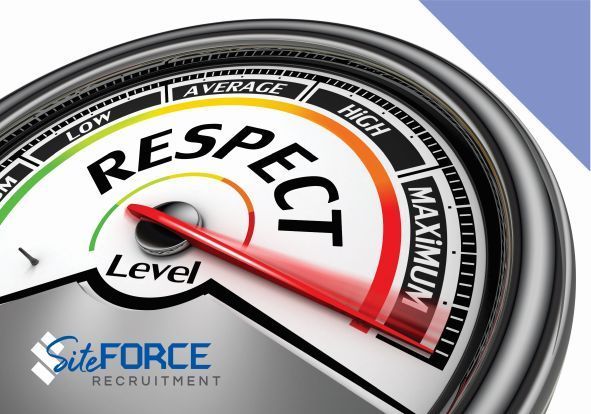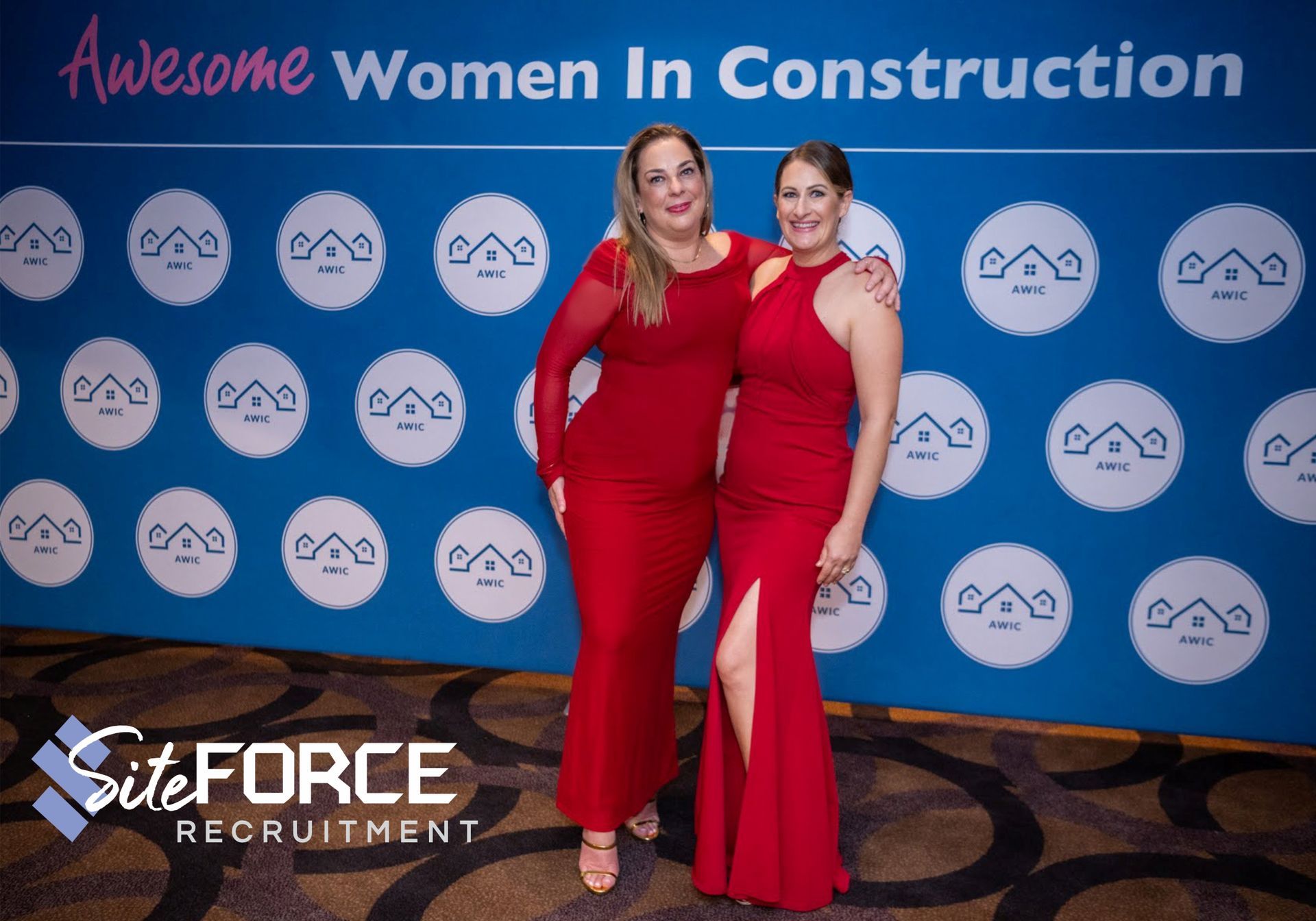DEALING WITH A ‘DODGY’ CHARACTER ON SITE
The ‘Big 4 Common Trouble Points’ on a Construction Site

/ Dodgy / [adjective]: This refers to something or someone that is poor quality, dishonest, unreliable or suspicious in informal language in Australia.
This it isn’t something you really want to hear about yourself, or one of your team, right?
Understanding the attitudes that can lead to being labelled a "Dodgy Character" or “not worth the bother” on a construction site is crucial for fostering a positive work environment and building a vibrant and reliable team.
It is true that sometimes we have all know ‘that’ person, that walks around with their own ideas in how things should work that does not align with the team or business goals that causes problems. A bad attitude on site is a problem. These may include a lack of empathy, arrogance, or an unwillingness to collaborate or adapt. Individuals who prioritise personal interests over the collective goals of the project can create tension and hinder progress.
Additionally, a disregard for safety protocols, whether intentional or due to negligence, can contribute to a negative atmosphere and discord in the workplace.
The challenge always is, is it repairable, or is it a personality glitch or attitude that the person refuses to shift. When faced with a ‘dodgy’ character on site, and the aftermath of the problems that seem to surround them, employers or team leaders need to assess which one of the three core situations this fits into:-
1. a lack of understanding in the person to the situation that can be remedied with education.
2. a lack of a good attitude or gratitude – and is this permanent or is there a workable solution.
3. or a mismatch where it really just won’t work and it’s time to organise a replacement?
It is essential for construction professionals to reflect on their own and their teams’ attitudes and behaviours, emphasising the importance of teamwork, respect, and a commitment to the overall success and well-being of the entire project team. By cultivating a culture of mutual understanding and cooperation, the industry can mitigate the impact of these negative attitudes and promote a more harmonious and productive work environment.
In my experience, I have identified the most common areas that cause discontent on site, I call the “The Big 4 Common Trouble Points on a Construction Site” that arise in a workplace, caused by our complex level of legislation, building and safety codes and expectations that we have on differing tiers in construction, and even how different sites are managed under union regulations compared to other sites. When we add into the mix a moving workforce, together with skill shortages and immigration challenges, you may find yourself, or your worker, misunderstanding the situation and expectations.
- For an employer: the key top success in this situation is identifying the effectively dealing with these differences and establishing which core situation you find yourself in.
- For an employee: the key to success here is to understand what the differences are, the situation you are in, and ensure you educate and empower yourself that these don’t cause problems for you.
Self Responsibility - moving across tiers, moving across country, moving across the world:
First and foremost, as a worker, you need to research and understand the industry conditions that you are moving to. You may have been ‘Apprentice of the Year’ in your hometown, but if you move across building tiers or locations, the necessity to research the industry, building codes and safety rules that are specific to your prospective employer and the location you are working in is your responsibility. You need to have the correct certifications for the job, and that includes the location specific requirements. Queensland in my experience, has some of the most rigid requirements and defects management expectations in the industry, and many employee coming up from south has struggled with the differences. You need to be up to speed as well as up to standard for the environment you are working in. If you are not, you may not go well, and complaints and discontent may follow you. At its worse, you may be labelled ‘dodgy’ and find it hard to advance your career.
Also you need to research prospective employers. Many a time over the past few years, crews have moved up to Queensland from down south without doing their research on the employer, who has then gone broke, leaving the worker and their family in dire straits. Having an open and frank conversation with a great recruiter (yes, that’s me) on everything, leaving no question unasked will help set you up for a brighter future.
I implore workers to do the research needed before making any move, and to engage a trusted recruiter where honesty and transparency are welcomed and beneficial guidance offered.
The Big 4 Common Trouble Points
The Big 4 Common Trouble Points on a Construction Site I have seen pop up over and over are shown below, together with steps and questions to ask yourself on ways to identify and improve the situation:-
- Managing Expectations on Site:
- Communication is key in any construction project, and managing expectations is crucial to maintaining a harmonious work environment. Contractors, project managers, and workers need to establish clear and realistic expectations from the outset. This involves transparent communication on the key 10 issues:
- Communication channels and direct reports;
- Role and responsibility definitions of each team member;
- Realistic project planning and deadlines;
- Progress updates and reporting responsibilities;
- Risk Management;
- Codes and Compliance;
- Workplace Health and Safety;
- Defect expectations and management;
- Education access including project plans, regulations, safety protocols and reports;
- Feedback mechanisms and where to seek help if needed.
Addressing concerns proactively can help prevent misunderstandings that may lead to conflicts on the site.
- Question: How can you ensure that your team's expectations align with the project's goals, and what steps can you take to communicate effectively to avoid conflicts?
2. Understanding Differing Safety Regulations:
Safety regulations on construction sites in Australia vary across different states, reflecting the decentralized nature of the regulatory framework. According to a study conducted by the Australian Constructors Association (ACA) in 2021, there is a notable divergence in safety standards between states and territories.
For instance, Queensland places a strong emphasis on fall prevention measures, with stringent guidelines on working at heights, while New South Wales focuses on electrical safety standards, particularly in the context of crane operations. These variations pose a challenge for construction companies operating nationally, necessitating a thorough understanding of state-specific regulations to ensure compliance. As highlighted in the research conducted by the ACA, this variance underscores the importance of continuous education and awareness programs for construction professionals to navigate the intricate landscape of safety regulations across Australia's diverse regions effectively.
Australia's construction industry is subject to varying safety regulations across different states. It is imperative for professionals to stay informed about the specific safety standards applicable to their project location. Failure to comply with safety regulations not only poses a risk to workers but can also result in legal consequences for the entire project.
As mentioned above, if you are perceived as having a disregard for safety protocols, whether intentional or due to negligence, this may contribute to a troublemaker and/or nor worth the trouble as you are putting not only yourself at risk, but others.
- Question: How do you stay updated on safety regulations in different states, and understand what is expected of you, and on site. What measures can be taken to foster a safety culture on the construction site?
3. Understanding Differing Building Codes – Moving Location or Immigrating:
While Australia follows the National Construction Code (NCC) as a guiding framework, there are notable differences in building regulations across its various states and territories. Research conducted by the Australian Building Codes Board (ABCB) highlights the nuanced variations in local interpretations and amendments to the NCC.
For instance, a study published in the Journal of Building Survey, Appraisal & Regulatory Compliance in revealed that Western Australia has specific regulations addressing cyclonic wind loads due to its susceptibility to tropical storms, whereas Tasmania emphasises thermal performance standards to address its cooler climate.
These regional adaptations underscore the importance of a comprehensive understanding of state-specific building codes for construction professionals. The research further indicates that while there is a push for greater harmonisation, the current state-by-state differences necessitate vigilant compliance efforts to ensure that construction projects align with the nuanced building regulations of the respective jurisdiction.
The variances in building regulations across different states in Australia can pose significant challenges for construction workers when relocating. Moving from one state to another may require workers to familiarise themselves with entirely new sets of regulations, creating a potential learning curve. The discrepancies in codes, standards, and procedures may demand additional training and certifications, leading to delays in securing employment or adjusting to a new construction environment. Additionally, the shift may require workers to adapt their skill sets to meet the specific building requirements of the new state.
Immigration challenges may compound these difficulties, making it imperative for workers to navigate not only the intricacies of state-specific regulations but also potential visa restrictions. The construction industry's reliance on a mobile and skilled workforce makes it crucial for workers to be resilient, adaptable, and proactive in staying informed about the building regulations unique to the region they are moving to, ensuring a smoother transition and successful integration into the construction landscape in Australia, or of a different state.
- Question: How do you ensure your team is consistently adhering to the relevant building codes, and what measures can be taken to streamline compliance across different regions? How can you create an inclusive environment for workers from different cultural backgrounds, and what steps can be taken to support international workers facing immigration challenges?
4. Navigating Union Regulations:
The construction industry often has unionized workforces on certain commercial sites, with different expectations for tier 1, tier 2, tier 3 and commercial sites. Understanding these union dynamics is essential for project managers and workers alike. Building strong relationships with unions can foster collaboration and prevent conflicts that may arise due to misunderstandings or non-compliance.
The distinction between a unionized and a non-unionized construction site in Australia is significant, impacting the dynamics of the workplace and the expectations of workers. On a unionized site, workers are typically represented by a construction union, such as the Construction, Forestry, Maritime, Mining and Energy Union (CFMMEU). These sites adhere to specific union regulations, which often include negotiated wage rates, standardised working hours, and established safety protocols. Workers on unionized sites expect collective bargaining power, job security, and a structured grievance resolution process.
In contrast, non-unionized sites operate without direct union involvement, giving employers more flexibility in setting wages and working conditions. Workers on non-unionised sites may expect greater individual negotiation power but might also face less standardised conditions. The expectations of workers in unionised environments often revolve around solidarity and shared benefits, while those in non-unionised settings may prioritise individual negotiations and potentially greater autonomy in their working arrangements. The choice between unionised and non-unionsed sites often reflects the broader labour philosophy and priorities within the construction industry.
- Question: How do you navigate the complexities of union regulations and non-union expectations, and what strategies can be employed to maintain positive relations with union representatives if that is the case?
Success:
Successfully navigating the complexities of the Australian construction industry requires a proactive approach to communication, continuous education on regulations, and fostering a culture of collaboration.
By addressing the challenges posed by differing expectations, safety regulations, union dynamics, building codes, and immigration issues, construction professionals can contribute to the success of their projects while avoiding the label of being dodgy on a worksite.
Of course, if you have done everything you need to resolve the situation, and it just isn’t working, then it may be time to replace a dodgy character. Give me a call, and I can guide you through the situation and find the right person for the right job.
You might find these articles also helpful in this situation:
Want a Sterling Reputation in 2024?
The Art of Conducting Effective Employee Reviews
Unveiling Delusions in the Recruitment Industry
Our Superpower
Our leading 'superpower' is attracting and retaining quality team members who share our values of honesty, integrity, diligence, and service, allowing us to deploy quality team members on client sites quickly.
Our team member's superpower is being motivated, prepared and ready to enthusiastically contribute to the projects at hand, more than just a pair of hands.
Related articles:
Read other informative articles for both employers and workers at: https://www.siteforcerecruitment.com.au/blogs
Chantal Penny is the Director with Superpowers of SiteForce Recruitment. A thought leader in the industry, Chantal, based on her expertise and industry perspective, offers unique guidance, inspiration, and influence in the industry. Chantal Penny is also a thought leader in the industry with her Podcast, Talent Instinct, which is available at:
https://talentinstinctpodcast.libsyn.com/site
At SiteForce Recruitment, we specialise in labour-hire and permanent recruitment in the construction industry. We are committed to valuing people, safety and wellbeing, collaboration, trust and, of course – results!
CONNECT with us via our contact page or bookings links on our website if you are looking to recruit for, get your dream job, or join our amazing labour force team.
Yes, please get in touch with me:
Thank you for contacting us.
We will get back to you as soon as possible.
Have a brilliant day!
Chantal Penny and the Team
SiteForce Recruitment
www.siteforcerecruitment.com.au
Please try again later.
© SiteForce Recruitment Pty Ltd 2021
Website by Big Bold Branding











